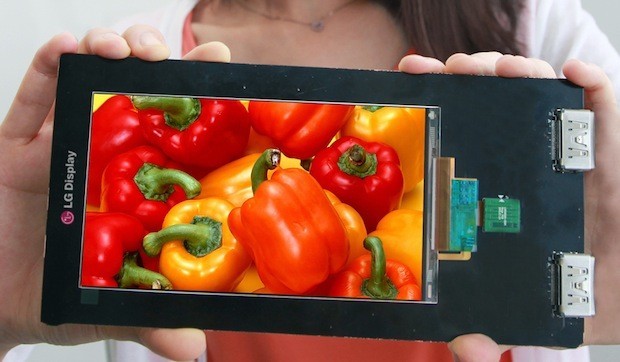LG Display has today announced the world's first Quad HD 2560 x 1440 smartphone display, an impressively dense 538ppi, 5.5-inch AH-IPS LCD panel. The screen is also the slimmest going around, according to LG's press release, at 1.21mm thick with a bezel of just 1.2mm, beating previous records set by the LG G2's 1080p display.

Overall, the panel has four times the pixels of a 720p display (hence the Quad HD name), packing a whopping 3.7 million into a relatively small space. A Low Temperature Poly-Silicon (LTPS) substrate has also been implemented, helping to make the display brighter than previous panels at 430 nits, and thanks to improved transmittance, the display should be easily readable outdoors.
At this stage, LG haven't announced when this LCD panel will be seen in consumer products, although it's suited perfectly for either next-year's flagship LG device, or an Optimus G Pro phablet successor.
It will be interesting to see how this 538ppi display compares to the current batch of 1080p displays, which are already over 400ppi at sizes below 5.5-inches. More processing power will be required to render at this level of detail, so any phones that do choose to use such a high-resolution display will also need to have the CPU and GPU grunt to cope, which could, in turn, have a negative effect on battery life.
https://www.techspot.com/news/53706-lg-announces-55-inch-2560-x-1440-smartphone-display.html